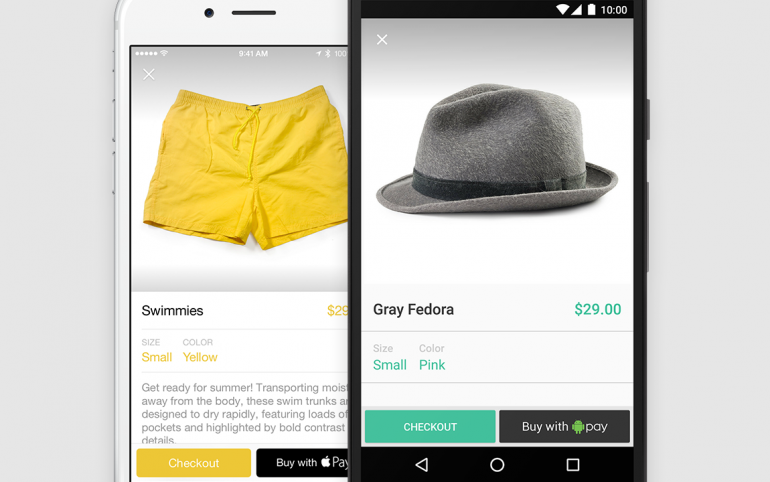At its first-ever Unite Conference in San Francisco, Shopify has announced two new SDKs that allow developers to implement core features of the Shopify platform onto any application.
The company is releasing enhanced versions of its iOS and Android Buy SDKs this spring. Notable new features include Android Pay integration, which will allow users to shop and securely checkout using Android Pay; the company had already released an Apple Pay SDK earlier last year.
In an interview with BetaKit, Shopify product manager Brandon Chu said that Shopify has been transitioning towards mobile since its online stores became mobile-responsive in 2012, and integrating Android Pay was an anticipatory move as more customers transition to this payment method. Currently, 60 percent of online store visits on the Shopify platform come from mobile.
Chu said that at the company’s current scale, democratizing the Shopify platform made sense to continue growth. “Shopify started out as a product where you could make ecommerce websites, but it’s really a company that thinks of itself as a platform where you’re building a commerce and retail operating system and letting businesses do what they need to do to succeed,” Chu said. “Great companies like Facebook and Google are very much a platform, and a lot of growth and their impact in the world comes from them being very open as a platform.”
Other announced features include customer login details, so merchants can provide customized experiences for returning customers and create targeted notifications to these customers, as well as a Mobile Buy SDK UI kit, allowing developers to streamline workflows with access to a comprehensive set of basic template views. Developers working with the Mobile Buy SDK UI kit can access like empty collection grids, product lists, and single product views.
Chu said that, ultimately, the goal is to help small businesses that don’t have the resources to create mobile apps. “We could take an approach where we’re going to be the ones to dictate how your store is going to look and we can launch themes that are awesome, but who are we to say that we are the best designers in the world? Instead, let’s build a product in a way where other people can add expertise into it to find best product for the end customer.”


